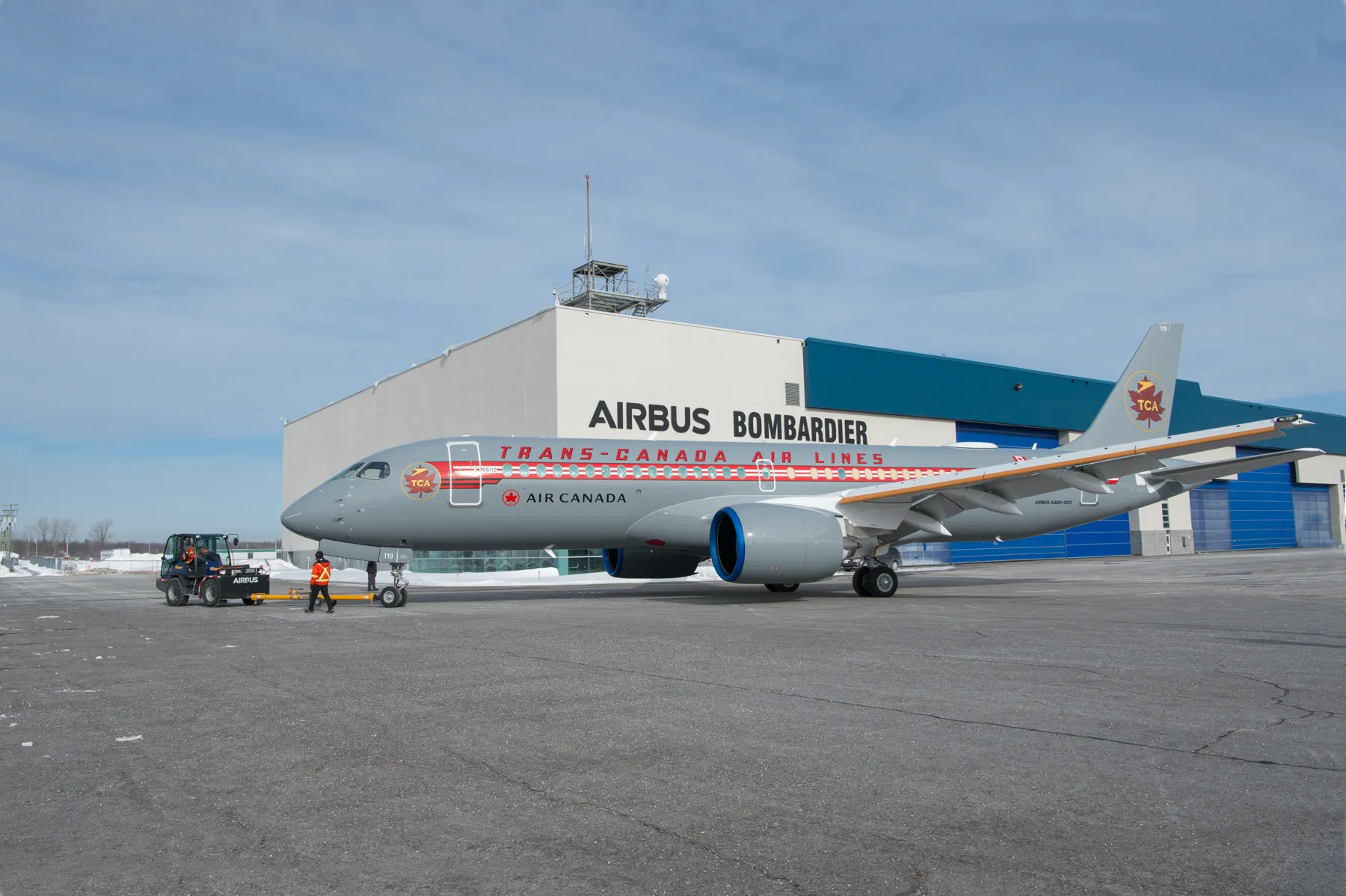
As the saying goes, everything old is new again.
It’s with pride today that Air Canada officially revealed a specially painted Airbus A220-300 in the colours of the airline’s original name, Trans-Canada Air Lines (TCA).
The special livery pays tribute to the airline’s heritage, which can be traced back to its founding in 1937. However, this is not the first aircraft to bear this livery, as many avgeeks will already know.
The special livery celebrating the TCA heritage first appeared in August 1997 as Air Canada celebrated its 60th anniversary. At that time, it was painted onto a brand-new Airbus A319 (Fin 264, Registration C-FZUH), making its delivery flight from Toulouse to Montreal with a group of employees on board to celebrate the occasion.
After nearly 24 years in the fleet, that aircraft was retired in January 2021.
The special livery will now travel across North America on the newest aircraft in Air Canada’s narrow-body fleet, with Fin 119 (registration C- GNBN) making its maiden flight in March 2021.
There is some symmetry with the livery being handed off from the A319 to the Mirabel-built A220-300. Air Canada was the first North American operator of the A319 and was also the first to operate the Airbus A220-300 on the continent when revenue service began in January 2020.
Designed and built in Quebec, the Airbus A220-300 is an integral part of Air Canada’s fleet modernization and each A220 includes parts from 30 companies that are based in or have activities in Canada, making this aircraft a true testament to the importance of the aviation sector in Canada
TCA Retro Livery – By the Numbers:
9 – The number of days it took to paint this A220.
75 – Airbus Canada employees from a variety of teams involved in painting.
4 – Colours applied for the livery.
350 – Litres of paint used
Better For The Environment
The A220 is not only better for the environment while flying, but Airbus has innovated the way it paints the aircraft in Mirabel to be better for the planet.
In fact, an Air Canada A220 painted in October 2020 was the first aircraft to be prepared for the final coats of paint using Socogel, a surface treatment solution that is chromium-free and has a low volatile organic compound (VOC) content.
While improving paint application and adhesion, it also has the benefit of significantly reducing the amount of water used in the painting process, saving more than 10,000 litres of water per aircraft.
The story behind the Air Canada Rondelle
While the TCA logo proudly featured the Maple Leaf, which is synonymous with Canada, the corporate identify and symbol would undergo a transformation into the iconic Rondelle you see today.
By 1964, two years after it reached its 25th anniversary, TCA had become the world’s seventh largest airline. Recognizing a need to further reflect the size, prestige, and bright future for the company, plus wanting to proudly represent its home country in world markets, it was decided that a major corporate branding update was in order.
Borrowing from the previous decade’s success introducing the “Air Canada” moniker to better serve the French-speaking market, TCA then proudly re-branded itself permanently as Air Canada.
Design firm Stewart and Morrison Ltd. was soon commissioned and lead designer Hans Kleefeld (known for developing logos for Tim Hortons and the Bank of Montreal, among others) quickly produced ideas for the airline’s Board of Directors. By October 1964, the new corporate signature and logo — the rondelle — was unveiled, and officially adopted on January 1, 1965.
